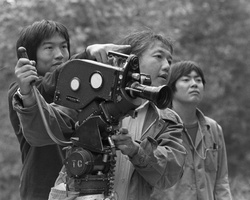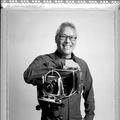“Growing up in the 1950s and early 1960s, we were subjected to stereotypical portraits or invisibility,” Eddie Wong recalls. “We knew we could make a difference by providing an alternative in the form of books, photo exhibits, and eventually films and video.”
Wong, together with colleagues Duane Kubo, Robert (Bob) Nakamura and Alan Ohashi, started Visual Communications (VC) in 1970—a pioneering nonprofit organization dedicated to supporting Asian American and Pacific Islander filmmakers and media artists.
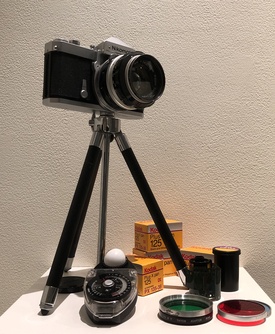
In anticipation of the 50th anniversary of VC’s founding, VC collaborated with the Japanese American National Museum on the exhibition, At First Light: The Dawning of Asian Pacific America. At First Light chronicles VC’s formation and history and the emergence of politically defined Asian Pacific American consciousness and identity.
“We started VC because of the need to provide more accurate and multi-dimensional portrayals of Asian American people both in the educational arena and in the mass media,” says Wong.
Wong especially credits Nakamura for being a catalyst. He notes that Nakamura created “America’s Concentration Camps,” a sculpture and photographic display consisting of 29 black cubes on a wooden platform. The piece was commissioned by the Japanese American Citizens League (JACL) as part of a campaign to repeal the Emergency Detention Act of 1950. It served as an exhibit about the incarceration of Japanese Americans during World War II. Incorporating both historical photographs and more recent images from community pilgrimages to camp sites, the piece embodied the use of media for social change. Because Nakamura wanted to start an organization, he called the installation a product of “Visual Communications.”
”We really began with the idea of recapturing our past and presenting our past,” Nakamura says. “Our audience was really our own communities. It wasn’t about art, it wasn’t about self-expression, it wasn’t even about breaking stereotypes to the majority society. We wanted to break stereotypes to ourselves.”
“What is important to know about VC’s history is that we were essentially students and young folks wanting to document and make change,” says Kubo.
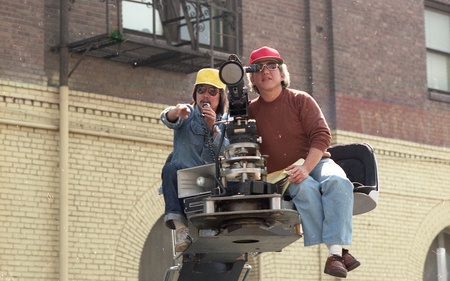
“I met Bob at UCLA’s film school and we began distributing our first films through VC and wrote some funding proposals to develop educational materials, which led to the Ethnic Understanding learning kits,” says Wong. “I also got a National Endowment for the Humanities grant to research Chinese American history and used the funds to visit California historical societies and libraries to make copies of photos in their collections. We later turned those photos into study prints for use in secondary education.”
Wong says that VC was closely tied to the emergent Asian American studies movement and the push for multicultural inclusion in elementary and secondary school curriculum. He notes that the movement was led by a diverse range of African American, Latino, and Asian activists.
“I think what distinguished VC was our commitment to document community life and draw inspiration from everyday people,” says Wong. “Thus, we created media works about laundrymen, gardeners, teachers, doctors, produce workers, and students.”

“I came over to VC from the Gidra [a seminal monthly Asian American publication] staff and I think we had similar goals—a progressive voice for Asian Americans, retaining our history, culture, and community and creating a new Asian American (AA) culture,” says Kubo. “Overall, we were inspired by the social movements of the 1960s. In particular, I was greatly influenced by the strong AA movement in L.A.”
Kubo observes that VC’s approaching anniversary and current political tensions in the U.S. provide a unique opportunity to compare history with the present.
“While many things have changed, much still remains the same,” he says. “I’m encouraged by the documenting and archiving of a lot of our community’s history and the number of people and institutions dedicated to this. I’m also encouraged by the commitment of academics to Asian American studies and the development of resources to further the field. It would be great to see even more.”
“I guess I was thinking during the Obama administration that things had been moving steadily along the path of progress,”; he adds. “Now today, I’m not so sure. The rise in racism, white nationalism, immigrant bashing, and the general decline in civility, fanned by the current administration, is really disheartening and backwards. I think we who oppose this trend need to speak out.”
“There are still lingering perceptions of Asian Americans as perpetual foreigners or ‘honorary whites,’” Wong says. “This somewhat contradictory set of portrayals makes sense in the racial dynamics of U.S. society where the growth of multiculturalism engenders white hostilities.” He cites the Trump administration’s immigration and civil rights policies as examples of white supremacist philosophies having a disturbing resurgence of influence.
But while many old challenges remain, Wong notes they are being fought against the backdrop of a significantly changed landscape. “The most notable phenomenon today is the growth of each community on several levels: business, political representation, cultural arts, and education,” he says. “There are prominent individuals in all these fields in each of the Asian communities. Thus, we have a greater potential in telling our stories to the broader public.”
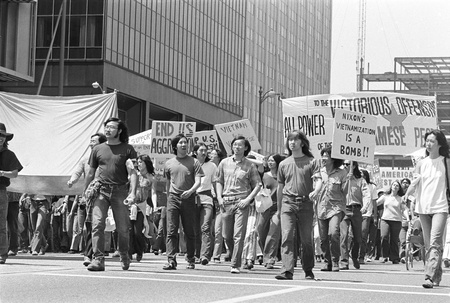
Wong sees America as now going through what he calls “an existential crisis.” “The majority white paradigm is shifting with people of color growing into the majority population by 2050. This change has already happened in large metropolitan areas such as Los Angeles. Moreover, traditional gender roles and sexual identities are being upended leading to vibrant new subcultures. Similarly, perceptions of Asian Americans are not relegated to one box; we are immigrants, we are longtime Americanos, we are hipsters, we are just a little of everything—chef, geek, tattoo artist, teacher, activist, etc.”
Both Wong and Kubo find glimmers of hope in recent success of Asian Pacific Americans in mainstream entertainment. “I would also say that the recent success of Crazy Rich Asians opened some doors for AA stories to be consumed by the general public,” says Kubo. “I’ve always felt that AA stories, given the chance with great material, actors and marketing, could be embraced by a multicultural audience.”
Wong and Kubo see maintaining optimism and persistence as crucial for the community.
“I hope that people find some inspiration in VC’s history,” says Wong. “It shows what a small but highly organized and motivated group of people can accomplish with relatively few resources. It also demonstrates that it takes a community to nourish a start-up arts organization.”
* * * * *
At First Light: The Dawning of Asian Pacific America is on view at the Japanese American National Museum from May 25, 2019 to October 20, 2019.
Los Angeles, California
A co-production of Visual Communications (VC) and the Japanese American National Museum, At First Light: The Dawning of Asian Pacific America is a multi-media exhibition that explores and celebrates the emergence of a politically defined Asian Pacific American consciousness and identity.
The exhibition chronicles the transformation of the un-American categorization of “Oriental” to the political identity of “Asian Pacific American” that rejected racist stereotypes, stood up for human rights, recovered lost histories, and created new cultural expressions. The exhibition draws from hundreds of thousands of photographs and more than 100 videos in the collections of VC, the first Asian Pacific American media organization in the country, which formed in Los Angeles in 1970 to capture and cultivate the newfound unity that was Asian Pacific America. In the present-day climate of xenophobia and racial profiling, At First Light seeks to strengthen current resistance and resolve by evoking the legacy of Asian Pacific American activism.
For more information about the exhibition >>
© 2019 Darryl Mori



